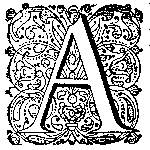‘Only the strangest and most horrible cases’: The Role of Judicial Violence in the Work of Jan Luyken
DOI:
https://doi.org/10.18352/emlc.73Keywords:
martyrdom, book illustrations, executions, Jan Luyken, violence, printed imageAbstract
In 1685, Dutch Calvinist publishers brought to the market a new edition of the Anabaptist martyrology Het bloedig tooneel. Marketed mainly towards wealthy Dutch Anabaptists, the book included 104 high-quality etchings made by the Amsterdam artist Jan Luyken. Famous for their explicit depiction of executions, these images of martyrdom have been studied and explained mainly with reference to Luyken’s Anabaptist leanings, older illustrated martyrologies, and the textual elements of Het bloedig tooneel. However, Luyken matched his work on martyrdom with an impressive production of secular execution prints that are often indistinguishable from their religious counterparts. Taking these similarities as a point of departure, this article will argue that Luyken’s work was not solely concerned with religious and political views, but also with judicial violence as a visual theme in its own right. Besides partisan or sacred readings of violence, Luyken’s prints framed executions in terms of diversity and specificity, leading to the production of a wide variety of explicit and unique images of beheadings, hangings, and burnings. Within this context, Luyken’s execution prints turned scaffold violence into a marketable theme that was eagerly exploited by Amsterdam publishers across a wide variety of illustrated books.
Downloads

Published
Issue
Section
License
Copyright (c) 2018 Michel van Duijnen

This work is licensed under a Creative Commons Attribution-NonCommercial 4.0 International License.





